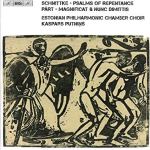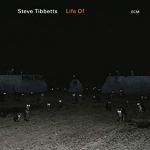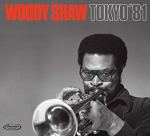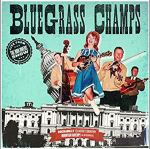PICK OF THE MONTH
 Bird Streets
Bird Streets
Bird Streets
Omnivore
OV-294
Best-ever opening line for a bemused kiss-off song: “You must be alive, because you cashed the check.” (Second best line on the album, from a different song: “Candy-coat it if you will/But you’re no cure, you’re just another pill.”) So who is Bird Streets? In the grand tradition of one-person power-pop bands (cf. Wishing Wells, Field Study, St. Vincent more or less), it’s a guy named John Brodeur, better known to the cognoscenti as a sideman to the likes of Freedy Johnston and White Hills and as a prolific producer of TV soundtrack music. But here he’s indulging his taste for 1960s guitar jangle, 1970s guitar crunch, sharp lyrical wordplay, and hooks hooks hooks. And it’s glorious. He writes some of the best chord changes since Tony Scalzo, and his voice is lovely without being cloyingly sweet. This is a summer album, and summer’s almost over, so you’ll want to get it into the stacks as soon as you can.
CLASSICAL
 Jaan Rääts; Arvo Pärt; Henryk Górecki
Jaan Rääts; Arvo Pärt; Henryk Górecki
Kaleidoscopic
Patrick Messina; Henri Demarquette; Fabrizio Chiovetta
Aparte Music (dist. PIAS)
AP187
Rick’s Pick
 Alfred Schnittke; Arvo Pärt
Alfred Schnittke; Arvo Pärt
Choral Works
Estonian Philharmonic Chamber Choir / Kaspars Putnins
BIS (dist. Naxos)
BIS-2292
For the past 30 years or so, there has been a steady stream of brilliant and groundbreaking music flowing from both northern and eastern Europe. These two discs bring together two of the most important headwaters of those streams: Estonia (home of Jaan Rääts and Arvo Pärt) and post-Soviet eastern Europe (home of the Polish composer Henryk Górecki and the Russo-German Alfred Schnittke). While each of these composers has a very distinct voice, each of them is also very clearly a product of his time and place. Kaleidoscopic is a program of pieces for clarinet, cello, and piano; the Rääts work is an etude, and a somewhat spiky but still quite beautiful one, whereas the Pärt composition is a fascinating rearrangement of the middle movement of a Mozart piano sonata. The concluding work is Górecki’s intensely involving Lerchenmusik: Recitatives and Ariosos, which beautifully alternates aggression with contemplation. The Rääts and Pärt compositions are presented here in world-premiere recordings. The disc by the Estonian Philharmonic Chamber Choir treads more familiar ground, but is no less beautiful and engaging; Schnittke’s Psalms of Repentance are lovely but challenging, sometimes soft and remorseful but then regularly rising in intensity to barely-controlled beseeching shrieks. And then the two Pärt compositions, both of them familiar by now (his settings of the Magnificat and the Nunc dimittis texts) and both of them soothing as a balm after the fiery devotion of the Schnittke. These are both outstanding albums.
 Jan Ladislav Dussek
Jan Ladislav Dussek
Piano Concertos opp. 3, 14, 49
Howard Shelley; Ulster Orchestra
Hyperion (dist. PIAS)
CDA68211
I know it must be getting monotonous for you, dear readers: like clockwork, Hyperion’s Classical Piano Concerto series keeps pumping out little-known masterpieces by the likes of Steibelt, Clementi, Kozeluch, and Dussek, and like clockwork, I keep recommending them in CD HotList. I hope it’s not too tedious, but I do feel an obligation to let my fellow librarians know whenever a new installment arrives, because they’ve been so consistently wonderful. Once again, Howard Shelley’s playing sparkles, and his ability to lead the Ulster Orchestra (playing modern instruments) from the keybocdunivard continues to impress. Dussek’s piano concertos are not nearly as well-known as they should be, making this volume (and the series overall) highly valuable in both academic and aesthetic terms.
 Jane Antonia Cornish
Jane Antonia Cornish
Constellations
Innova (dist. Naxos)
1 006
Rick’s Pick
In October of last year I gave Jane Antonia Cornish’s album Into Silence the “Pick of the Month” designation, expressing irritation that my duties had required me to spend part of the previous month listening to other albums as well as that one. I’m having kind of a similar experience now with Constellations–a shimmeringly gorgeous and aptly titled collection of pieces scored for piano, strings, and electronics, one that I could happily put on repeat and spend an entire day with. When I say the album is aptly titled, what I mean is that Cornish’s music aurally approximates the visual experience of looking at a clear night sky: it defines a vast space that is filled with twinkling, glittering points of light. A must for every library collection.
 Lou Harrison
Lou Harrison
Works for Percussion, Violin, and Piano
Percussion UVU
Albany
TROY1731
Rick’s Pick
Lou Harrison was one of America’s great weird composers. Like Harry Partch, Conlon Nancarrow, and John Cage, he delighted in using highly unconventional objects as sound-production mechanisms, and the pieces performed on this utterly delightful album call for the use of such items as washtubs, brake drums, and ocarina in addition to more traditional instruments. What keeps Harrison’s music from sounding like a classical remix of Spike Jones performances is the fact that he uses his strange instruments so carefully and wisely–sometimes invoking the sounds of a gamelan (a lifelong interest for him), sometimes nestling them gently against simple and lyrical melodic lines, sometimes marshalling them in support of traditional musical forms (like the Concerto for Violin with Percussion Orchestra, performed here). The results are generally quite direct and accessible, but also often surprising, and this recording of these works by the percussion ensemble of Utah Valley University is consistently outstanding. Highly recommended to all libraries.
 Various Composers
Various Composers
Aeternum: Music of the Elizabethan Avant Garde from Add. MS 31390
LeStrange Viols
Olde Focus Recordings (dist. Naxos)
FCR912
Those who are familiar with music of the Elizabethan era might respond with bemusement to the subtitle of this recording, but obviously, context is everything. in 1578 (when most of the material in this tablebook was copied), the composer William Byrd had recently replaced Robert Parsons at the Chapel Royal and was writing music that incorporated techniques and styles previously unheard: even to 21st-century ears, the dissonances created by his canonic technique in O salutaris hostia are startling. But among his forward-looking pieces are plenty of familiar works for the viol consort, by the likes of Parsons, Christpher Tye, John Sheppard, and others. All of the playing is excellent, and the recorded sound is pleasingly warm and close. Recommended to all early music collections.
 Electronic Chamber Music
Electronic Chamber Music
Otso Lähdeoja; Alejandro Montes de Oca; Aino Eerola; Nathan Riki Thomson
Siba (dist. Naxos)
SRCD-1022
The ensemble that made this recording seems to have no name; the musicians are simply billed individually: Lahdeoja plays guitar and electronics, Montes de Oca plays modular synthesizer, Eerola plays various violins and electronics, and Thomson plays prepared double bass and electronics. There is also no information about how the music was created, so we are left to assume that it consists of group compositions and/or improvisations. The result–which would be more accurately characterized as “electroacoustic chamber music”–is actually really quite nice. The ten untitled tracks, inscrutibly grouped into two sets titled “ADC” and “DAC,” vary from highly abstract to classically modernist, with occasional digressions into what can only be called a groove. It’s a great example of how fun and exciting electro-acoustic art music can be.
 William Mundy
William Mundy
Sacred Choral Music
Choir of St. Mary’s Cathedral, Edinburgh / Duncan Ferguson
Delphian (dist. Naxos)
DCD34204
Rick’s Pick
Though not quite as widely celebrated as his fellow Tudor masters John Sheppard and (especially) Thomas Tallis, William Mundy is responsible for some of the most breathtakingly beautiful choral music of 16th-century England. And on this program, glowingly performed by the choir of St. Mary’s Cathedral in Edinburgh, we get not only a handful of his more-familiar pieces, but also three world-premiere recordings, among them a reconstructed version of his obscure motet Maria virgo sanctissima (from which the tenor part had been entirely lost). There is also an unusual entry in the motet In exitu Israel, which was actually a collaboration between Mundy, Sheppard, and a very young William Byrd. The recorded sound is excellent, and the music is sumptuous. Recommended to all library collections.
 Various Composers
Various Composers
Piano Music of Barber, Carter, Griffes, Ives & Zaimont
Drew Petersen
Steinway & Sons (dist. Naxos)
30095
All too often, piano recital programs are predictable: they tend to focus on popular favorites (Chopin, Brahms, Bach, etc.) or on virtuosic display (Scriabin, Liszt, Bach, etc.), or both. This one, by the impressive young pianist Drew Petersen, does neither. Instead, it focuses on works by American composers–some of them more familiar (Charles Ives’ “Concord” sonata; Samuel Barber’s E-flat sonata) and some of them less so (Elliott Carter’s only piano sonata, played here with hardheaded brilliance, and the premiere recording of Judith Lang Zaimont’s Attars, in which she proves that “bracing” and “impressionistic” aren’t necessarily a contradiction in terms). Here the focus is on Americanness, and the kaleidoscopic manifestation of that quality across a diverse spectrum of compositional voices during the past century. As a pianist, Petersen is a wonder–but he keeps the focus on the pieces themselves, and in so doing makes a powerful argument for what might seem at first to be a rather idiosyncratic program.
JAZZ
 Steve Tibbetts
Steve Tibbetts
Life of
ECM
2599
Rick’s Pick
There are very few guitarists out there with an immediately recognizable style, but Steve Tibbetts is one of them. And these are what I think of as the defining characteristics of his approach: an aversion to pulse, and a tendency to take note-bending one step further into genuine melisma. Put those two tendencies together, and what you get is a floating cloud of sound that unpredictably delights when a note suddenly (but subtly) blossoms into three or four others. On his latest, Tibbetts is joined by percussionist Marc Anderson and cellist Michelle Kinney–but don’t be listening for beats (there are none) or for anything that sounds particularly like a cello (Kinney mostly creates drones that fade in and out of the mix so subtly that they often sound like echoes of the guitar). This is music that moves in irregular waves and to which it makes the most sense simply to abandon yourself. Luxuriate in the pulselessness. Listen to what Tibbetts is doing–it’s always interesting and very often technically impressive–but don’t let it distract you from the gestalt.
 Woody Shaw
Woody Shaw
Tokyo 1981
Elemental Music
5990429
This disc consists of a live recording made in 1981 and never before released. Woody Shaw’s name is not as well known as it should be–not because he was unsuccessful, but because he died young and never had a chance to fully establish his legacy. This live set shows us what we missed out on: a fiery and sensitive player with stunning technique and great skills as a bandleader. Here he leads an unusual ensemble: the front line consist of trumpet and trombone (played by Steve Turre), along with a rhythm section that features pianist Mulgrew Miller. The sound quality is not excellent but it’s quite good, and Shaw’s interaction with his band is consistently exciting–they often sound like a much bigger group than they are. Note in particular the thrilling performance of Miller’s composition “Apex.” Recommended to all jazz collections.
 Masayoshi Fujita
Masayoshi Fujita
Book of Life
Erased Tapes (dist. Redeye)
ERATP111CD
Masayoshi Fujita’s music straddles the mist-filled valley that separates classical music from jazz. A vibraphonist and composer, he writes music that often shimmers and pulses like modernist minimalism (note in particar the Steve Reich-flavored “Mountain Deer” and the Harold Budd-flavored “Misty Avalanche”), but also sometimes swings (though very gently) and often flows like turn-of-the-century impressionism. Here he is accompanied by a violinist, a flutist, and two cellists, as well as by a very subtly wielded chorus of voices. Everything is not only soothing and beautiful but also consistently interesting, with textures that move in kaleidoscopic fashion much as the music’s harmonic progression does. I’ll be seeking out more by this gifted composer.
 Birch Pereira & the Gin Joints
Birch Pereira & the Gin Joints
Western Soul
Self-released
No cat. no.
This Seattle-based band has gotten jazz awards in the past, but on their second album they move a bit forward in time, into the golden era of mid-century blues, R&B and early rock’n’roll. Frontman and bassist/singer Birch Pereira reps his hometown with the album’s opener, an original titled “How Long (Until I See the Sun Again)?”, but after that the focus is on classics: “St. James Infirmary,” “I Don’t Like I Did Before,” “Lulu’s Back in Town.” But Pereira and crew stamp their unique vision on all of them–notice how slow and lugubrious their take on “St. James Infirmary” is, for example. But also notice how traditionally the Pereira original “A Love I Can’t Explain” swings. And it’s that frequency of traditional swingingness that landed this wonderful album in the Jazz section, despite the fact that it doesn’t fit there any better than it does anywhere else. Good for them, I say.
 Mary Halvorson
Mary Halvorson
The Maid with the Flaxen Hair
Tzadik (dist. Redeye)
TZ 4024
Rick’s Pick
OK, pay close attention: this album is credited to Mary Halvorson, but it’s really a duo project with fellow guitar innovator Bill Frisell. And what the two of them are doing with this album is paying tribute to a third guitarist, the legendary Johnny Smith (known mainly for his hugely popular composition “Walk Don’t Run”). All of the pieces presented here are duets, some of them (like the album-opening “Moonlight in Vermont”) featuring bizarre electronic echoes that lurk, sort of zombie-like, behind the main guitar voice and shouldn’t enhance the music but somehow do. It’s worth noting that only “Walk Don’t Run” is a Smith composition; the others, including the Claude Debussy-composed title track, are tunes that were associated with Smith or that Smith arranged. Halvorson and Frisell are very different guitarists, but what they share is an ability to thoroughly deconstruct tunes in a way that is simultaneously radical and gentle, and that inevitably results in deep beauty.
 Dennis Lichtman
Dennis Lichtman
Just Cross the River: Jazz in Queens New York 1923 to the Present
Triple Treble Music
TTM-CD-007
Rick’s Pick
Whenever you’re in the mood for some vintage hot jazz, clarinetist and composer Dennis Lichtman is there for you. But his latest release puts a twist on jazz traditionalism: its 14 tracks consist of five classic tunes and nine brand-new ones in a traditional style, written in response to a grant provided by the Queens Council on the Arts in support of a concert that was put on in the backyard of Louis Armstrong’s old house in that borough. Listen all the way through and see if you can guess which ones are which original and which are hot-jazz standards; I couldn’t, but it was sure fun to try. Along with the swinging, piping-hot instrumentals there are several very fine vocal turns featuring Mazz Swift and Jerron “Blind Boy” Paxton. All of it is a complete blast.
 Takaaki
Takaaki
New Kid in Town
Albany
TROY1689
Takaaki Otomo is not actually a “new kid in town”; on the contrary, since 2008 he has released several albums as both a leader and a sideman, and he’s been a fixture on the New York jazz scene since his move there from Japan in 2014. His latest as a leader finds him exploring jazz styles both old and new, alternating between swinging post-bop standards (“Django,” “In Your Own Sweet Way”), modern originals (including bassist Noriko Ueda’s “LullWater” and Otomo’s own very lovely “Evening Glow”), and surprising adaptations (two movements from Gustav Holst’s suite The Planets). All of it showcases his tremendous range and melodic inventiveness, as well as the startlingly impressive level of communication he enjoys with this only-recently-established trio. Highly recommended.
FOLK/COUNTRY
 The Slocan Ramblers
The Slocan Ramblers
Queen City Jubilee
Self-released
No cat. no.
The geographical giveaways are two: the album title, and the original fiddle tune called “Down in the Sugarbush,” a reference that will only make sense to eastern Canadians and northern New Englanders. This Toronto-based bluegrass band makes no attempt to pass themselves off as Appalachian: they’ve happily adapted the forms of bluegrass and old-time music (banjo player Frank Evans alternates between clawhammer, Keith, and Scruggs styles with impressive amazon ease) to their own lyrical and stylistic agenda, which combines locally-influenced lyrics with hard-driving, virtuosic traditional bluegrass praxis. What it all adds up to is an exciting and beautiful album of old-school modernity, beautifully sung and thrillingly played.
 High Fidelity
High Fidelity
Hills and Home
Rebel
REB-CD-1864
Rick’s Pick
I’m on the record as being against musical purism as an ideology. But that doesn’t mean there’s anything wrong with great music that happens to be purist. Consider this album by the young and thrillingly virtuosic High Fidelity band, who look like a bunch of Mormon missionaries and sound like earthbound angels. Named for the annotation often seen on classic bluegrass albums of the 1950s and 1960s, these guys are unapologetic revivalists, drawing on the lesser-known repertoire of artists like the Louvin Brothers, Reno & Smiley, and Jim & Jesse McReynolds. They have a particular affection for gospel songs and deliver them beautifully (note in particular the tight harmony singing on “I’ve Changed My Mind”), but they are also incredibly hot pickers (note in particular the twin-banjo Reno-style workout “Follow the Leader”). Having worked individually with an impressive roster of A-list bluegrass artists, these guys are now something of a trad-bluegrass supergroup, and are clearly poised to make a big noise. It’s going to be fun to watch and listen.
 Bluegrass Champs
Bluegrass Champs
Live from the Don Owens Show
Yep Roc (dist. Redeye)
YEP-2555
So there’s bluegrass revivalism and then there’s bluegrass reissueism. This album is a hardcore example of the latter. It’s a moderately good-sounding transcription of an episode of the Don Owens TV show, recorded sometime in the late 1950s (very little information is provided) and featuring the legendary Scott Stoneman and his family band. The Stonemans were the house band for the Owens show, and as such had to be utility players: they could do just about anything, regularly switching between bluegrass, rockabilly, and honky-tonk country music, often playing backup for singers who were guests on the program. Their wide-ranging skills are on full display here, as they veer crazily from the straight-up country of “Goin’ Crazy” to a countrified version of “Tequila” and from the classic weeper “Dark Hollow” to “Rock-a-Bye Boogie.” The energy is raw and maybe a little bit shaggy, but it’s real and it’s tons of fun.
ROCK/POP
 Ogikubo Station
Ogikubo Station
We Can Pretend Like
Asian Man
AM 338
Rick’s Pick
Ogikubo Station is a duo consisting of Asian Man Records label head Mike Park and singer-songwriter Maura Weaver, and they have a mission statement: “Simple chords with simple melodies with the simple goal of having fun playing music.” And that’s fair enough, but don’t let them fool you: the songs are fun, and they’re definitely straightforward (alt-guitar-pop at varying levels of noisiness), but I’m not sure they can really be characterized as “simple.” They succeed at coming across that way because they’re so artfully crafted, and even when the distortion is messy and the vocal harmonies are really just octaves, the lyrics are sharp and thoughtful and the chord progressions are often subtly surprising. And dang if “Weak Souls Walk around Here” doesn’t strongly evoke middle-period R.E.M. (cf. “Driver 8”). Strongly recommended to all pop music collections.
 Paul Frick
Paul Frick
Second Yard Botanicals (DIGITAL AND VINYL ONLY)
Apollo (dist. Redeye)
AMB1807
When someone has classical training but a lot of experience in hip hop and trip hop, you can expect his debut album to be a little weird. And of course, “a little weird” can go either way–it can be delightfully eclectic or eye-rollingly pretentious. To Paul Frick’s credit, Second Yard Botanicals is almost entirely the former and never the latter. It is, however, sometimes pretty dang weird. “Bankhaus August Lenz” is mostly a drone, with occasional incursions of something that sounds like a cross between dripping water and pizzicato cello; “Great Song Title 9” is a groovy, bustling pile of layered samples; “3000 Euro” flirts with house, but seems to be doing it ironically somehow. All of it is gentle enough to fade into the background if you let it, but that would be a shame–there’s tons there to pay attention to.
 X-Altera
X-Altera
X-Altera (DIGITAL AND VINYL ONLY)
Ghostly International
GI-316
Rick’s Pick
I have not been able to get enough of this album ever since I got my review copy a couple of months ago. Tadd Mullinix is one of those producer/composers who (annoyingly) records under a variety of aliases, and (conveniently) creates different types of music depending on which one he’s using. Thus: if you’re into acid and techno, check out his work as JTC; if you prefer hip hop, look for what he does under the name Dabrye. But if, like me, you’re a fan of weird jungly bass music with a rich variety of textures and moods, then his new X-Altera moniker is the brand to look for. His self-titled debut album under that name is an absolute delight, a constantly-shifting array of beats, samples, and tunes. Mullinix has absorbed and metabolized so many kinds of dance music over the years that he is now able to create sounds that look simultaneously forward and back, and that never fail to grab your attention. Here’s hoping he does more like this in the very near future.
 The Beat
The Beat
Here We Go Love
Here We Go
HWG01CD
Over 30 years ago the Beat (known in the US as the English Beat) helped to define what came to be called the 2 Tone sound–an amalgam of pop, ska, and punk that took England and then the rest of the world by storm: named for the label that was home to the Specials, Madness, the Bodysnatchers and the Selecter, 2 Tone grew in the early 1980s to encompass other bands and labels until it flamed out about halfway through the decade before a new ska revival hit in the 1990s. Today the Beat is original lead singer and songwriter Dave Wakeling with a bunch of other guys who are adept at the old-school sound, and the band’s first new album in several decades sounds as if those decades never happened: it continues to be a political, whip-smart, hooks-laden blend of ska backbeats and professional pop song structure. Wakeling is cursing a bit more than he used to (check out the truly nasty title track, yikes), but he still writes a sing-along chorus like nobody’s business. It’s great to have him back.
 The Rails
The Rails
Other People
Thirty Tigers
88676
With a sound centered on acoustic guitars and a tendency to lean in the direction of Fairport Convention-style folk-rock when the larger band kicks in, the latest album from the Rails (James Walbourne and Kami Thompson) could almost as easily fit in the Folk/Country category as Rock/Pop. Not that it matters; what matters are the songs and the singing of them, and in that regard Thompson and Walbourne are a match made in pop music heaven. I’ll make the de rigeur observation that Kami Thompson is the daughter of Richard and Linda Thompson, and therefore comes by her lovely voice and her songwriting ability honestly, but I don’t want to take away from either her accomplishment or that of Walbourne, who is a wonderful guitarist and a fantastic songwriting partner to Thompson. And if “Shame” sounds like a magnificent outtake from a late Fairport album, and “Brick and Mortar” sounds like a song Tom Waits might have written if he were a Brit, so be it–the world needs more of that kind of thing. This is great stuff.
 Okzharp & Manthe Ribane
Okzharp & Manthe Ribane
Closer Apart
Hyperdub (dist. Redeye)
HDBCD041
It’s always fun to hear the tropes of hip-hop being twisted and reused to other effects–especially when the result is something truly unique and exciting. In the collaborative work of producer Okzharp and co-producer/singer Manthe Ribane, the beats are muted and darkened, while the samples that are central to hip hop tradition and the conspicuous Autotuning that is everywhere in modern pop and R&B are used for artistic, almost ironic purposes. When vocals are used in modern bass music it’s very often for textural effect, but Ribane’s lyrics are mostly comprehensible and generally carry real propositional content, making this album simultaneously experimental, abstract, and straightforward. And the beats are magnificent. This is what avant-pop sounds like in the 21st century, and it’s great.
WORLD/ETHNIC
 Roberto Musci & Giovanni Venosta
Roberto Musci & Giovanni Venosta
Messages & Portraits (selective metareissue)
ReR MEGACORP (dist. MVD)
ReRMVCD
I have described this release as a “selective metareissue” because it brings together most (but not all) of the content from two ReR albums originally issued on LP, and both actually still in print in that format: Water Messages on Desert Sand by Roberto Musci (RR C28) and Urban and Tribal Portraits by Giovanni Venosta (ReR 37). It’s “selective” because five tracks are missing from the original programs due to the space limitations of a single CD; it’s a “metareissue” because this is actually a reissue of the original reissue, which was released in 1990. Anyway, enough with the colophon — how about the music? It’s wild and wonderful, in both cases incorporating field recordings from Asia and Africa (a Burundi story-teller, a pygmy chant, a Balinese monkey-chant, an Ethiopian cow-seller’s patter, etc.) mashed up with both electronic and acoustic instruments and treatments. The concept may sound a bit like My Life in the Bush of Ghosts, but nothing here sounds remotely like that album. Too weird to be called “pop” and too accessible to be called “avant garde,” this disc is recommended to all adventurous library collections.
 Bagar a.k.a. Tricky D
Bagar a.k.a. Tricky D
Tricky Dubs (DIGITAL ONLY)
BBE Music
No cat. no.
With a title like Tricky Dubs, you might reasonably expect the latest collection of remixes by celebrated producer Dean Bagar (doing business as Tricky D) to be pretty reggae-centric. And you wouldn’t be far wrong: Tippa Irie makes an appearance on an impressive dubstep-inflected recut of the classic “Conquering Lion” rhythm, and artists like Aldubb and Jah Seal make an appearance as well. But Bagar is about fusion: what you hear as much as anything else on these tracks is the Latin groove in its many varieties (notice in particular the “Tabla Rmx” of Lianna’s gorgeous “Inspiration”), and he’s happy to take a techno excursion or two as well. If you love reggae and bass music but also love variety, this very fine collection should make you quite happy.
 Ethiopian & Gladiators
Ethiopian & Gladiators
Dread Prophecy (reissue)
Nighthawk/Omnivore
OVCD-285
For roots reggae fans, an album title like Dread Prophecy generates a little frisson of excitement, as it conjures up images of dire imprecations against Babylon delivered over thick, bass-heavy grooves with maybe some dub versions thrown in. And yes, that’s exactly what you get here with this crucial reissue from the Nighthawk Records vaults. Now, I feel duty-bound to point out that in this case the term “album” is something of an exaggeration–the program consists of four songs, each with an accompanying dub version, the whole thing clocking in at around 24 minutes in length. But every minute counts. When these sessions were recorded in the mid-1980s, Leonard Dillon’s voice was at its peak of richness and power, and the Gladiators’ rhythms are exactly what you’d want them to be: slow, deep, and as unstoppable as an elephant charge. Utterly brilliant, if way too short.
 The Gladiators
The Gladiators
Symbol of Reality (reissue)
Nighthawk/Omnivore
OVCD-273
Rick’s Pick
And speaking of the Gladiators, they made several outstanding albums of their own for the Nighthawk label during the 1980s and 1990s, and those are now being brought back to market as well. Symbol of Reality (1982) was the first, followed by Serious Thing in 1984 and Full Time in 1992. All of them are now being given loving reissue treatment by the outstanding Omnivore label, with additional content, much of which has not been issued before. All three of these albums are excellent, but Symbol of Reality is the logical place to start, and its combination of hip-swaying rhythms, strictly conscious lyrics, vinegary harmonies, and abundant dub versions makes it a solid winner and an essential addition to any reggae collection.